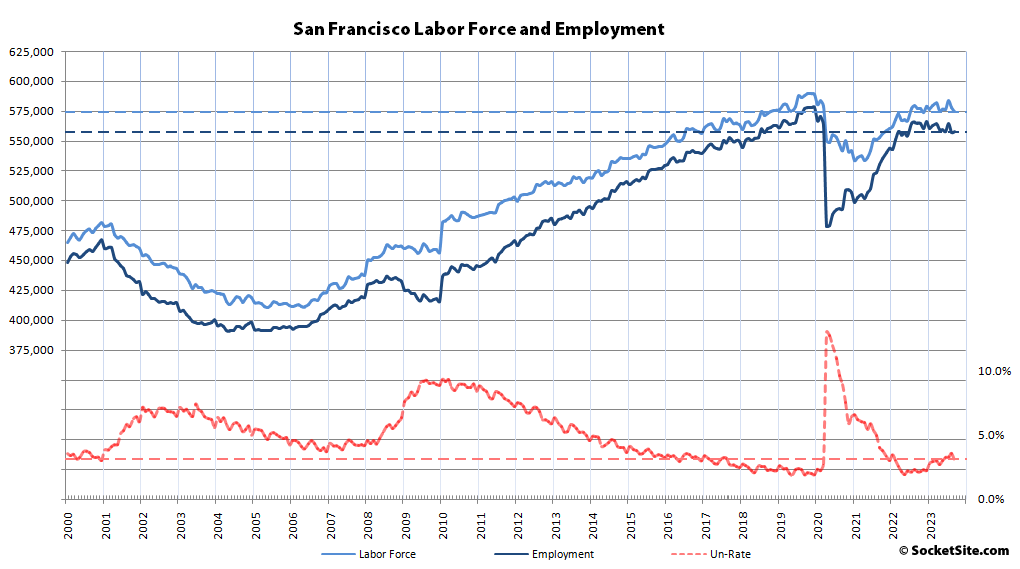Having dropped by an upwardly revised 7,300 in August, the number of San Francisco residents with a job inched up by 600 in September to 557,600 but was down by 7,400 on a year-over-year basis, representing the third straight month with a year-over-year decline in local employment since the pandemic ended, and the post-pandemic recovery began, with over 20,000 fewer employed people in San Francisco than there were at the end of 2019, prior to the pandemic, and over 14,000 fewer people in the local labor force (574,900), despite an unemployment rate of “just 3.0 percent.”
At the same time, the number of employed East Bay residents ticked up by 9,800, having dropped by 10,200 in August, but was still down by 14,200 on year-over-year basis at 1,524,400, with 49,000 fewer employed residents than prior to the pandemic, nearly 28,000 fewer people in the labor force (1,589,100) and an unemployment rate of 4.1 percent.
Having dropped by 11,500 in August, the number of employed residents spread across San Mateo and Santa Clara Counties ticked up by 4,500 in September to 1,458,300 but was still down by 25,600 on a year-over-year basis, with 34,000 fewer employed people in Silicon Valley than there were prior to the pandemic and over 18,000 fewer people in the local labor force (1,505,600) despite an unemployment rate of only 3.1 percent.
Net employment across Marin, Napa and Sonoma counties increased by 5,600 in September to 444,200 and was actually up by 3,800 on a year-over-year basis, but with 17,000 fewer employed residents than there were prior to the pandemic and nearly 12,000 fewer people in the combined labor force (459,900) with an unemployment rate of 3.4 percent.
In total, while the net number of Bay Area residents with a job (3,984,500) ticked up by 20,500 in September, having dropped by 29,600 in August, total employment was still down by 43,400 on a year-over-year basis, representing the fifth straight month with a year-over-year decline, with over 120,000 fewer employed residents than there were prior to the pandemic, nearly 73,000 fewer people in the labor force, and an unemployment rate of “only 3.5 percent.”

